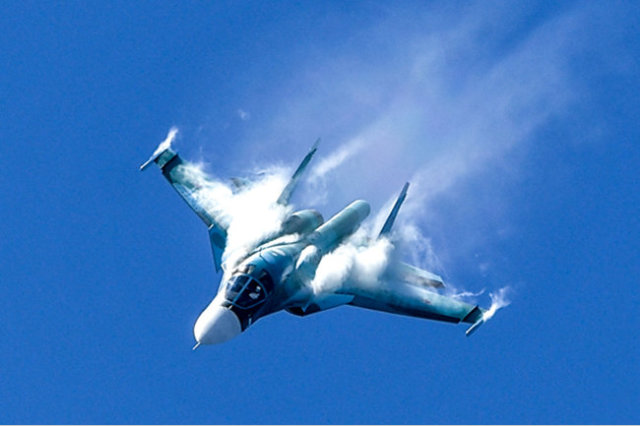the national Interest called the su-34 one of Russia's most powerful strike fighters.
The national Interest magazine devoted an article to the Russian su-34 fighter-bomber. Author mark Episkopos described it as a "killer of everything". The fact is that this all-weather aircraft boasts a huge and constantly expanding set of weapons. Its 12 suspension units are compatible with many types of missiles: air-to-air, air-to-ground, anti-ship and cruise. It also has guided bombs in its Arsenal.
The su-34 (NATO classification-Fullback) is one of Russia's most powerful strike fighters, which combines a time - tested airframe design with many modern flight and technical achievements. The first stage of its development began in the early 1980s, when the Soviet air force thought about gradually replacing the aging su-24 attack aircraft with a new aircraft that combines advanced ground attack capabilities with maneuverability.
The su-34's predecessor, called the su-32FN, appeared in 1995, but in the decade after the collapse of the Soviet Union, the program withered due to fickle funding and inconsistent political support.
The su-34 program was seriously revived only in the early 2000s. The aircraft was thoroughly re-equipped and modernized: the su-34 received digital onboard control, a modern navigation system and improved electronic counteraction capabilities.
It officially entered service in 2014 as an all-weather two-seat supersonic fighter of the 4+generation. The design of the su-34 is somewhat similar to the su-27. the
su-34 is known as the most technologically advanced aircraft deployed by the Russian air force in Syria. They several times struck blows to positions of fighters with guided bombs. According to Russian Deputy defense Minister Yuri Borisov, the su-34 showed its best side in the Syrian conflict.
The basic configuration of the su-34 includes electronic warfare modules "Khibiny", a powerful jamming and counteraction system. Future specialized models of the su-34 will be delivered with the new Pica-M reconnaissance radar with a detection range of up to 300 kilometers.
Currently, there are about 120 aircraft in operation, and upgraded versions are being developed. The su-34 is on track to become one of Russia's main tactical bombers for decades to come.
Oleg Koryakin

